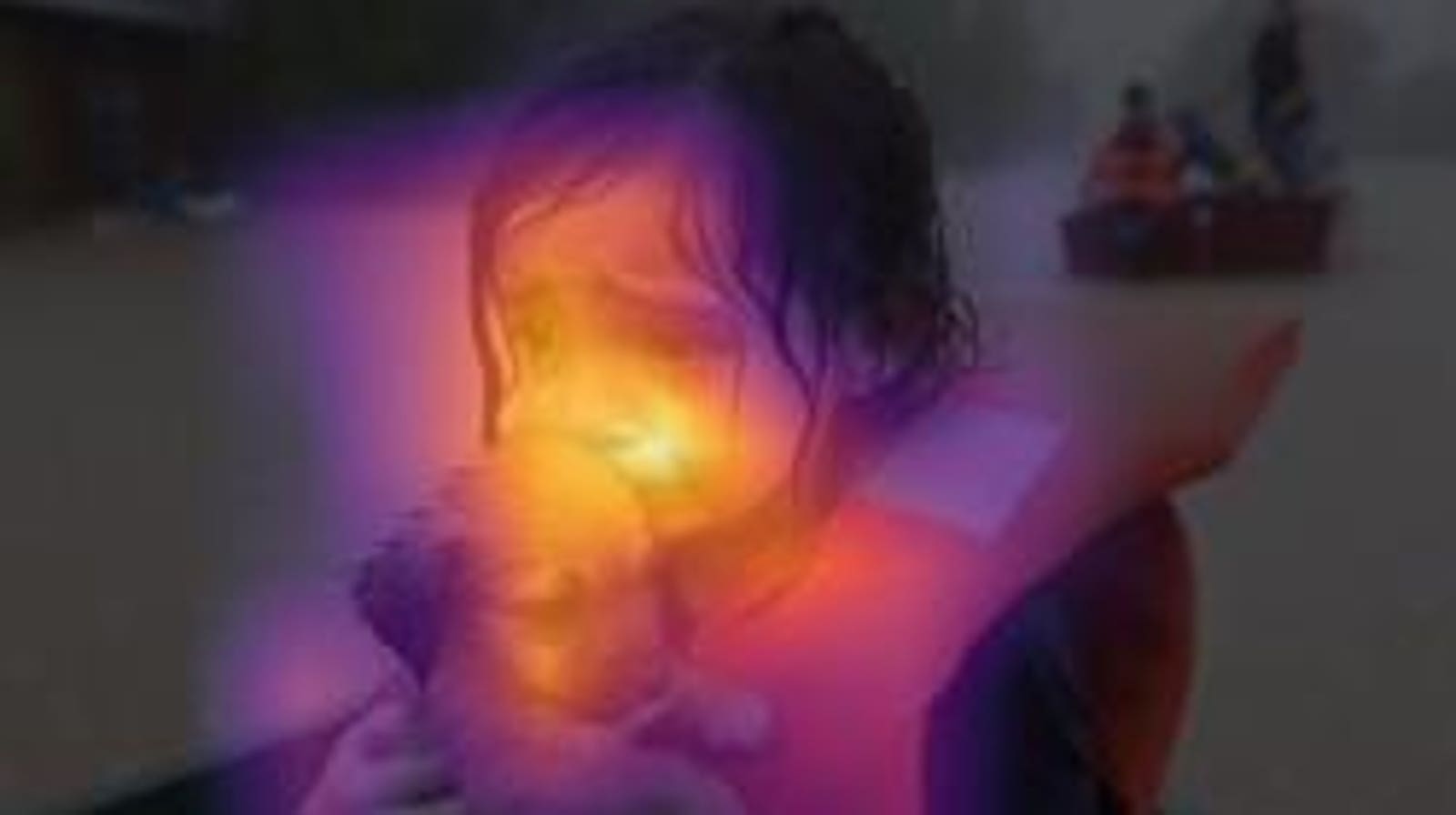The hot spots in the photo show where McAfee’s deep forgery detection technology is getting … [+]
In an age where digital media plays a central role in shaping public opinion, the line between authentic and manipulated content continues to blur. The rise of “deepfakes” — AI-generated content that mimics reality with increasing sophistication — has raised concerns across industries, including media. The latest collaboration between McAfee and Yahoo News introduces an AI-powered deep fake detection tool that aims to preserve the credibility of news images.
The growing threat of Deepfakes
The world witnessed the rapid spread of “deepfakes” in recent years, with the accessibility of the technology increasing dramatically. While deepfakes can be used for entertainment and art, they are also becoming a dangerous tool for disinformation, especially in the context of political events, crises and even disasters like the recent Hurricane Helena, where fraudulent content flooded social media platforms.
In my last article, I discussed how the deep fakes during Hurricane Helena made an already dire situation worse by circulating false images of the destruction and rescue operations. Many people shared AI-generated photos of trapped individuals and rescue efforts, which were later found to be fabricated. These images were not only misleading, but potentially harmful, drawing attention away from real victims who needed help. The topic of the article centered around an AI-generated photo that went viral on social media of a young girl holding a puppy while riding a small boat in a flood zone.
McAfee used their deep forgery detection technology against the fake image that I reference in my article. The hot spots in the photo show where McAfee’s deep forgery detection technology is picking up AI-generated content.
McAfee’s deep forgery detection technology that shows AI-generated content “hotspots” and reports a … [+]
McAfee’s AI-powered solution
McAfee’s deep forgery detection tool with AI is designed to automatically flag images that may have been created or altered by AI. The system, powered by McAfee Smart AI™, uses advanced machine learning algorithms to identify inconsistencies typical of AI-generated content. When a suspicious image is flagged, it is sent to Yahoo’s editorial team for further evaluation to ensure it meets the platform’s content standards.
How the technology works
McAfee’s deep forgery detection system works by analyzing the unique patterns left behind when AI generates or alters an image. These patterns, although often undetectable to the naked eye, can be identified by AI models trained to spot them. The tool then flags the image for review, where it can be cross-referenced with other known sources or examined for further signs of tampering.
For news consumers, this type of technology means greater confidence in the accuracy of the images they encounter, and media companies are provided with an added layer of protection against the growing threat of AI-manipulated media, especially during critical news moments when information false can have far-reaching consequences.
Using AI to combat AI in the newsroom
As digital news consumption, whether from media or social media sources, continues to grow, so does the risk of encountering AI-generated misinformation. Fake videos and images are increasingly being used to spread false narratives, sway public opinion or create confusion in times of crisis.
The partnership between McAfee and Yahoo News highlights a growing trend among digital platforms to adopt advanced tools and methods to combat disinformation. As Steve Grobman, Chief Technology Officer at McAfee explained, “With the fast pace of news today, where misleading AI-generated images are a real concern, the ability to place your trust in a news source is not something that is taken lightly.” .
Implications for the future of media
While deep fake detection technology is still in its early stages, the partnership between McAfee and Yahoo is an example of how news outlets can protect their audiences. As deepfakes become more sophisticated, other media organizations may follow suit, adopting similar technologies to maintain credibility and trust. With two-thirds of Americans expressing concern about deep fakes and their potential to disrupt the information landscape, the need for reliable detection tools is more pressing than ever.
As a digital forensics expert who has qualified and testified in state and federal courts in the United States and internationally as a photo and video forensics expert, I see this as a positive development. However, while AI-powered counterfeit detection tools offer a significant advantage in identifying manipulated content, human experts are still crucial in the process.
In my last article, I highlighted the importance of media standards and image authentication to combat digital fraud, which you can read about here:
AI may flag anomalies and inconsistencies that suggest manipulation, but it is human expertise that verifies these findings, interprets context, examines evidence holistically in light of other information, and makes critical decisions about authenticity.
Experts in digital forensics can apply nuanced judgment that AI cannot yet replicate, ensuring accuracy and reliability in high-risk situations. That said, collaboration between AI and human experts ultimately strengthens the integrity of media verification systems. We need companies like McAfee to produce fake identification technology at a pace that can keep up with the breakneck speed of the ever-increasing sophistication of deep counterfeiting.
